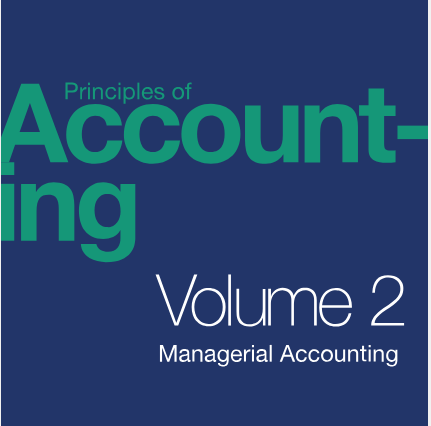
Principles of Accounting: Volume 2
Managerial Accounting
The comprehensive contents from this book, combined with Odigia’s Teaching and Learning Tools have everything you need to engage, collaborate, track and assess your students.
This course includes:

65
practice questions
Helping Teachers Do What They Do Best: Teach

Customize
Use our courses as is or easily customize them to fit your teaching style and the needs of your students. You can add your favorite resources, hide and show our existing content and pre-built assessments, or make them your own. Everything your students need, in one place!

Engage and Collaborate
Odigia combines learning materials, discussions, and tools to create a familiar social experience for students allowing you to easily connect and redirect students attention.

Track
See how much time students are spending on different areas of the course, which areas are creating the most amount of engagement and identify topics the students are struggling with. Flag and provide feedback on assignments to proactively meet individual students' needs.

Assess
Game theory allows students to monitor their progress visually and motivates them to stay on track. Students can see exactly what activities they need to complete, which ones have been flagged and compare their progress against the overall class.
Accounting Principles: Managerial Accounting Course Outline
Can Accounting be Used as a Tool for Managers?
- Why does it matter?
- What is Managerial Accounting? What are the three primary responsibilities of management?
- What is the difference between Financial and Managerial Accounting?
- What are the primary roles and skills required of Managerial Accountants?
- What is the role of the Institute of Management Accountants and the use of ethical standards?
- What are the trends in today’s business environment and what is their impact on accounting?
What are the Building Blocks of Managerial Accounting?
- Why does it matter?
- What is the difference between merchandising, manufacturing, and service organizations?
- What are basic cost behavior patterns and how do you apply them to the business environment?
- What is a variable and fixed cost equation and how can it be used to predict future costs?
What is Cost-Volume-Profit Analysis?
- Why does it matter?
- What is contribution margin? How can you calculate contribution margin per unit, contribution margin ratio, and total contribution margin?
- How can you calculate a break-even point in units and dollars?
- How can you perform a break-even sensitivity analysis for a single product under changing business situations?
- How do you perform break-even sensitivity analysis for a multi-product environment under changing business situations?
- How do you calculate and interpret a company’s margin of safety and operating leverage?
What is Job Order Costing?
- Why does it matter?
- What is the difference between job order costing and process costing?
- How can you describe and identify the three major components of product costs under job order costing?
- How can you use the job order costing method to trace the flow of product costs through the inventory accounts?
- How do you compute a predetermined overhead rate and apply overhead to production?
- How do you computer the cost of a job using job order costing?
- How do you determine and dispose of underapplied and overapplied overhead?
- How do you prepare journal entries for a job order cost system?
- How does a job order cost system apply to a non-manufacturing environment?
What is Process Costing?
- Why does it matter?
- What are the differences and similarities between job order costing and process costing?
- How do you explain and identify conversion costs?
- How do you explain and compute equivalent units and total cost of production in an initial processing stage?
- How do you explain and compute equivalent units and total cost of production in a subsequent processing stage?
- How do you prepare journal entries for a process costing system?
What are Activity-Based, Variable, and Absorption Costing?
- Why does it matter?
- How do you calculate pre-determined overhead and total cost under the traditional allocation method?
- How do you describe and identify cost drivers?
- How do you calculate activity-based product costs?
- What are the differences and similarities between traditional and activity-based costing systems?
- What are the differences and similarities between variable and absorption costing?
What is Budgeting?
- Why does it matter?
- How and why do managers use budgets?
- How do you prepare operating budgets?
- How do you prepare financial budgets?
- How do you prepare flexible budgets?
- How are budgets used to evaluate goals?
What are Standard Costs and Variances?
- Why does it matter?
- How and why are standard cost developed?
- How do you compute and evaluate materials variances?
- How do you compute and evaluate labor variances?
- How do you compute and evaluate overhead variances?
- How do companies use variance analysis?
What are Responsibility Accounting and Decentralization?
- Why does it matter?
- What is the difference between centralized and decentralized management?
- How does decision-making differ between centralized and decentralized environments?
- What are the types of responsibility centers?
- What are the effects of various decisions on performance evaluation of responsibility centers?
What is Short-Term Decision Making?
- Why does it matter?
- What is relevant information for decision making?
- How can you evaluate and determine whether to accept or reject a special order?
- How can you evaluate and determine whether to make or buy a component?
- How can you evaluate and determine whether to keep or discontinue a segment or product?
- How can you evaluate and determine whether to sell or process further?
- How do you make decisions when resources are constrained?
What are Capital Budgeting Decisions?
- Why does it matter?
- What are capital investment decisions and how are they applied?
- What is the payback and accounting rate of return in capital investment decisions?
- What is the time value of money and what are the present and future values of lump sums and annuities?
- How do you use discontinued cash flow models to make capital investment decisions?
- What are the similarities and differences between non-time value-based methods and time value-based methods in capital investment decisions?
What is a Balanced Scorecard and Other Performance Measures?
- Why does it matter?
- What is the importance of performance measurements?
- What are the characteristics of an effective performance measure?
- how can you sue return on investment, residual income, and economics value added to evaluate an operating segment or a project?
- What is the balance scoreboard and how is it used?
What is Sustainability Reporting?
- Why does it matter?
- What is sustainability and how does it create business value?
- What are some user needs for information?
- What are some examples of major sustainability initiatives?
- What are some future issues in sustainability?
Principles of Accounting is designed to meet the scope and sequence requirements of a two-semester accounting course that covers the fundamentals of financial and managerial accounting. Due to the comprehensive nature of the material, we are offering the book in two volumes. This book is specifically designed to appeal to both accounting and non-accounting majors, exposing students to the core concepts of accounting in familiar ways to build a strong foundation that can be applied across business fields. Each chapter opens with a relatable real-life scenario for today’s college student. Thoughtfully designed examples are presented throughout each chapter, allowing students to build on emerging accounting knowledge. Concepts are further reinforced through applicable connections to more detailed business processes. Students are immersed in the “why” as well as the “how” aspects of accounting in order to reinforce concepts and promote comprehension over rote memorization.
About the authors:
Senior Contributing Authors
Patty Graybeal, University of Michigan-Dearborn (Managerial Accounting)
Mitchell Franklin, LeMoyne College (Financial Accounting)
Dixon Cooper, Ouachita Baptist University


